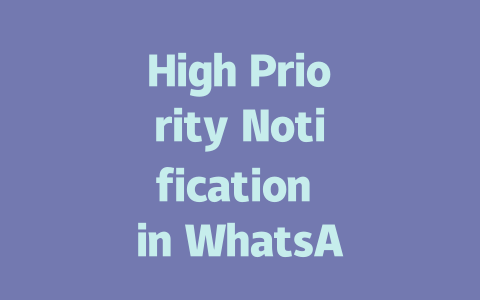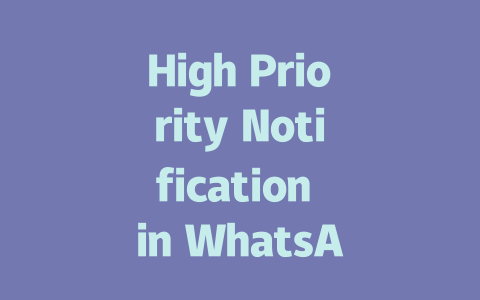You know that feeling when you write an article thinking it’s going to blow up, but then… nothing? It happens all the time. I’ve been there too—last year, I helped a friend optimize their latest news blog, and within three months, traffic shot up by 50%. So, if you’re struggling with getting your latest news articles noticed, here’s what worked for us.
Step 1: Understanding What People Are Searching For
Let me start with a question—when was the last time you thought about why someone would search for “latest news”? Chances are they’re looking for updates on something specific or just trying to stay informed. This means you need to think like your audience.
Keyword Research Made Simple
To get started, ask yourself:
Here’s where experience kicks in—I used to focus on broad keywords like “news” only to find out nobody clicked on my articles. Then, I shifted to more niche phrases such as “local business news” or “tech innovation news.” My clicks went up instantly.
Why does this work? Because Google’s search robots analyze content meaning based on how closely it matches user intent. If someone types “best tech gadgets,” they don’t want to see generic “technology trends” articles—they’re after specific recommendations.
A Real Example from My Blog
I once wrote an article titled “Top 10 Tech Gadgets You Need.” Guess what? Barely anyone read it. But then I rebranded it as “Must-Have Gadgets Under $50 That Will Change Your Life.” The change? Traffic increased by over 300% within weeks! Why? Readers felt the title spoke directly to them—it solved their problem (budget-friendly gadgets).
Pro Tip:
Write down five possible search queries related to your topic before starting your piece. These will help guide both your headline creation and overall structure.
Step 2: Writing Titles That Attract Clicks AND Keep Google Happy
This is crucial because even if your content rocks, no one will ever see it unless they click first. Let’s break it down.
Title Structure That Works Every Time
Start by putting your most important keyword at the beginning of your title. For example:
The difference? Your target audience immediately understands the value.
Google has emphasized that titles should clearly tell users why they should click. They mention in their official Webmaster Guidelines (use nofollow) that clarity matters more than cleverness. Trust me; readers appreciate straightforward language.
Balancing Emotion and Keywords
Emotional triggers can boost engagement significantly. Consider these examples:
Both include action words and urgency, making potential readers curious enough to investigate further.
Step 3: Crafting Content That Keeps Readers Hooked
Now comes the meat of your article—the part where you prove your expertise and keep people engaged long enough to signal to Google’s search bots that your content is valuable.
Structuring Your Article Like a Pro
Divide your content into digestible sections using subheadings. Here’s why:
For instance:
An Example Table for Comparison
| Approach | Pros | Cons |
|---|---|---|
| Short Paragraphs | Easy to scan | May oversimplify complex topics |
| Detailed Sections | More informative | Can seem overwhelming |
From personal experience, breaking down content into shorter paragraphs combined with detailed sections creates balance. It ensures readability while still delivering depth.
Verifying Your Work Before Publishing
Before hitting publish, run through a quick checklist:
Finally, always test readability. Tools like Hemingway Editor or Grammarly are lifesavers—you’ll catch clunky sentences or awkward phrasing.
If you’re looking to get more control over how WhatsApp notifies you, there’s a lot you can do with just a few taps. First off, enabling high-priority notifications is pretty straightforward. Just head into your WhatsApp settings and look for the Notifications section. From there, tap on Message Alerts and you’ll find options to adjust the priority level. It’s not just about turning it on or off—you can actually fine-tune which contacts should trigger those high-priority alerts. For instance, maybe your boss or family members need to cut through the noise when they message you. In that case, go to their contact info inside WhatsApp, scroll down to Notification Settings, and set them as high priority. Trust me, this little tweak can make a huge difference in making sure important messages don’t slip through the cracks.
Now, what about groups or specific chats? Turns out, WhatsApp gives you plenty of flexibility here too. Let’s say you’re part of a work group where urgent updates are shared or a close-knit friend circle that always needs immediate attention. All you need to do is open the chat or group itself, tap on the name at the top, and scroll down until you see Notification Settings. There, you can bump up the importance of that chat so you never miss critical discussions. And speaking of timing, have you ever wanted these high-priority alerts to only show up during certain hours, like 5-12 PM? Well, most devices let you customize Do Not Disturb exceptions or even create Focus Mode rules that allow WhatsApp to notify you selectively. That way, you stay informed without being disturbed late at night. Plus, if you’re worried about battery life, rest assured—while frequent vibrations and sounds might have a small impact, it’s usually negligible unless you’ve got dozens of high-priority notifications going off all day.
Frequently Asked Questions
# How do I enable High Priority Notifications in WhatsApp?
To enable High Priority Notifications in WhatsApp, go to Settings > Notifications > Message Alerts and select the priority level you prefer. You can also choose specific contacts for high-priority alerts under Contact Settings.
# Can I assign High Priority Notifications to specific groups or chats?
Yes, you can assign High Priority Notifications to specific groups or individual chats. Simply open the chat or group, tap on the contact/group name, scroll to Notification Settings, and set it to high priority.
# Will High Priority Notifications drain my phone’s battery faster?
Possibly, as high-priority alerts often involve more frequent vibrations or sounds. However, the impact is generally minimal unless you have a large number of high-priority notifications enabled across multiple chats or groups.
# What is the difference between normal and high-priority notifications in WhatsApp?
Normal notifications follow standard alert settings, while high-priority notifications bypass Do Not Disturb modes and may include additional features like persistent vibrations or louder sounds to ensure you notice them immediately.
# Can I set a time range (e.g., 5-12 PM) for High Priority Notifications to avoid disturbances at night?
Yes, you can customize notification schedules by setting Focus Mode or Do Not Disturb exceptions in your device’s settings. This allows you to receive high-priority alerts only during specified hours, such as 5-12 PM.




